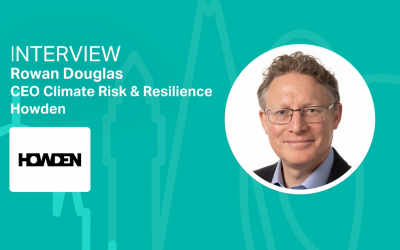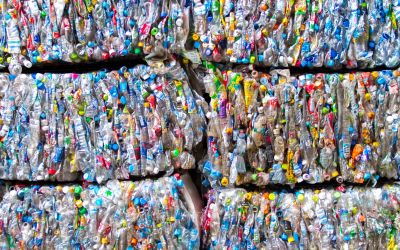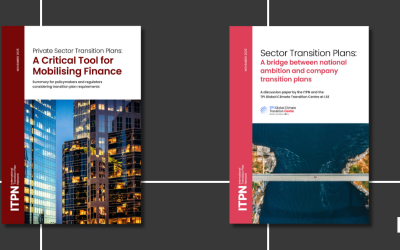Caroline Stancell on how Air Products are supporting the transition to net zero
Climate Action caught up with Caroline Stancell, General Manager, Hydrogen for Mobility - Europe & Africa, to discuss how Air Products are supporting the transition to net zero

Climate Action caught up with Caroline Stancell, General Manager, Hydrogen for Mobility - Europe & Africa, to discuss how Air Products are supporting the transition to net zero
Who is Air Products and how are you supporting the transition to net zero?
Air Products is the world’s largest hydrogen supplier and has been active in the hydrogen market for the last 70 years – from the initial steps of NASA’s space programme to hydrogen’s use in refineries and as a process gas.
Today, as a company, we produce around 9,600 tons of hydrogen per day and ship it in all modes of supply - whether that is in a high-pressure cylinder, in liquefied or compressed form, or through pipeline networks, the largest of which is over 1,000 kilometres long.
This hydrogen capability forms part of our established presence in the UK as an industrial gas provider, where we employ over 1,500 people. We supply a wide range of customers, from hydrogen for cars and buses to heavy industry, across the country. Our 400 engineers in Surrey work on projects globally including the world’s biggest green hydrogen project in Neom, Saudi Arabia.
At Air Products, we believe we have a higher purpose, and that’s to bring people together to collaborate and innovate solutions to the world’s most significant energy and environmental sustainability challenges.
We have the experience and know-how to help the UK deliver its plan to become a global leader in hydrogen production and use.
What role can hydrogen play in the energy transition?
Meeting the UK’s net zero ambitions will mean relying on a secure and diverse energy mix for which all technologies will need to play a role.
What’s clear is that for Britain to become a clean energy superpower, it needs to become a hydrogen superpower. Both green and blue hydrogen offer incredible potential as an energy source to facilitate decarbonisation.
We’ve worked with heavy industry, such as refining, steel and cement, for many years. We are seeing increasing interest from them in decarbonising driven, in part, by 2035 targets. Industry is actively looking for help in finding the right solution to the decarbonisation conundrum, so it can take the necessary technology and investment decisions. Equally hard to abate sectors such as transportation also need solutions. Hydrogen is a critical part of the mix.
What are the barriers to change?
Hydrogen technology exists today, but there are a number of barriers that need addressing.
Heavy industry demands a large scale, reliable supply of green hydrogen which will be difficult to develop under current policy that is focused on just one production pathway: electrolysis. We need to support multiple production pathways to accelerate the UK hydrogen economy.
A good example is the import of renewable energy for hydrogen production. It will be many years before local renewable energy hydrogen sources have sufficient scale and supply reliability to meet the needs of industry. Imported renewable energy which can be used to store and produce green hydrogen domestically alongside blue hydrogen (from carbon capture) does not have this limitation and is therefore a critical part of the transition.
The reality is that subsidising electrolytic hydrogen produced with domestically generated renewable energy, and not subsidising hydrogen produced with imported renewable energy (as the current Hydrogen Production Business Model does), risks favouring small scale intermittent supply. This will be at the expense of larger scale constant and reliable green hydrogen supply sources which are needed to accelerate a hydrogen economy and are needed for heavy industry.
There is no question that, in order to achieve the UK’s ambitions of at least 5GW of green hydrogen production by 2030, all options will be required.
What needs to happen now?
The UK government has been at the forefront of developing a decarbonisation roadmap, but other countries are now catching up. There’s a risk that the UK could be left behind as companies choose to invest in countries with favourable policies.
It’s important we distinguish between conceptual projects (with target pricing) and actual projects (post financial investment decision), otherwise we risk off-takers delaying sign up to real projects.
Globally Air Products is investing more than $15bn in actual energy transition projects through 2027.
We also want to take final investment decision forward for a green energy import terminal and associated domestic hydrogen production in Immingham. This facility would create 1,400 direct jobs in Immingham and deliver £4.6bn in financial benefits for a key Levelling Up area.
And let’s not forget the role of hydrogen for transport. We have recently launched Europe’s largest hydrogen refuelling station here in the UK. This and future stations need green hydrogen to support transport decarbonisation. If approved, this would come from Immingham
What is the role of companies like yours versus that of start-ups?
We need start-ups investing in, and contributing to, heavy industry’s decarbonisation. But we also need companies like Air Products. We have decades of experience with hydrogen and, by now, a comparatively long history designing, building, and operating CCUS (Carbon Capture, Utilisation and Storage) facilities.
Air Products has been operating the only large scale global CCUS facility in Port Arthur, Texas since 2013 (1 million tons of CO2 have been captured annually) and we are looking to bring that expertise to the UK.
We have signed agreement with VPI in the Humber to kick start our H3 project. This would capture up to two million tonnes of CO₂ per annum and contribute to achieving Net Zero in the wider Humber industrial region by 2040. Green and blue hydrogen production together in Immingham would create more than 2,000 jobs.
In short, we need blue and green hydrogen, we need multiple production pathways, and we need start-ups and well-established producers. This will ensure industry has the technical solutions and the confidence to invest in its plants and convert to low carbon hydrogen as an energy source.






